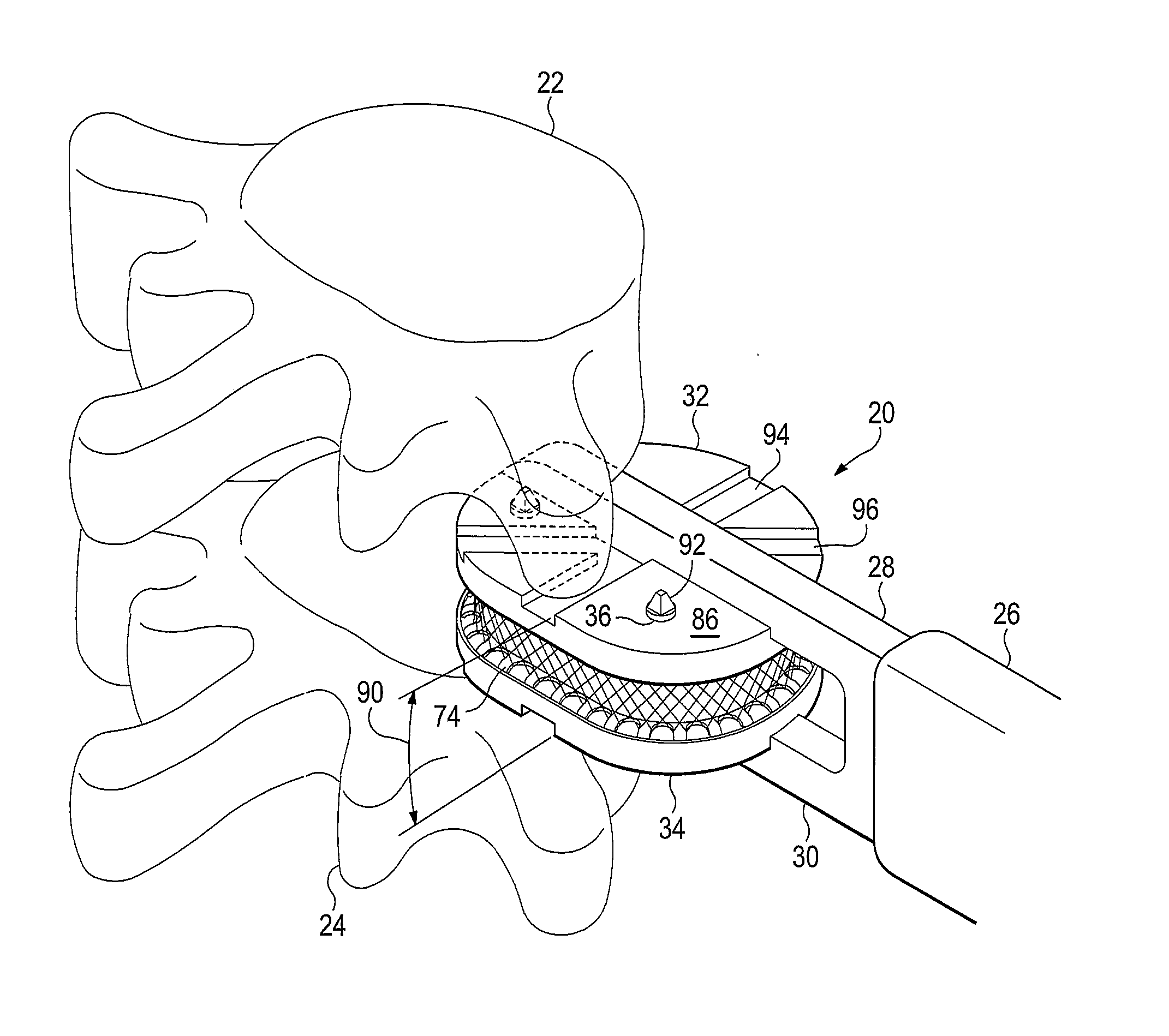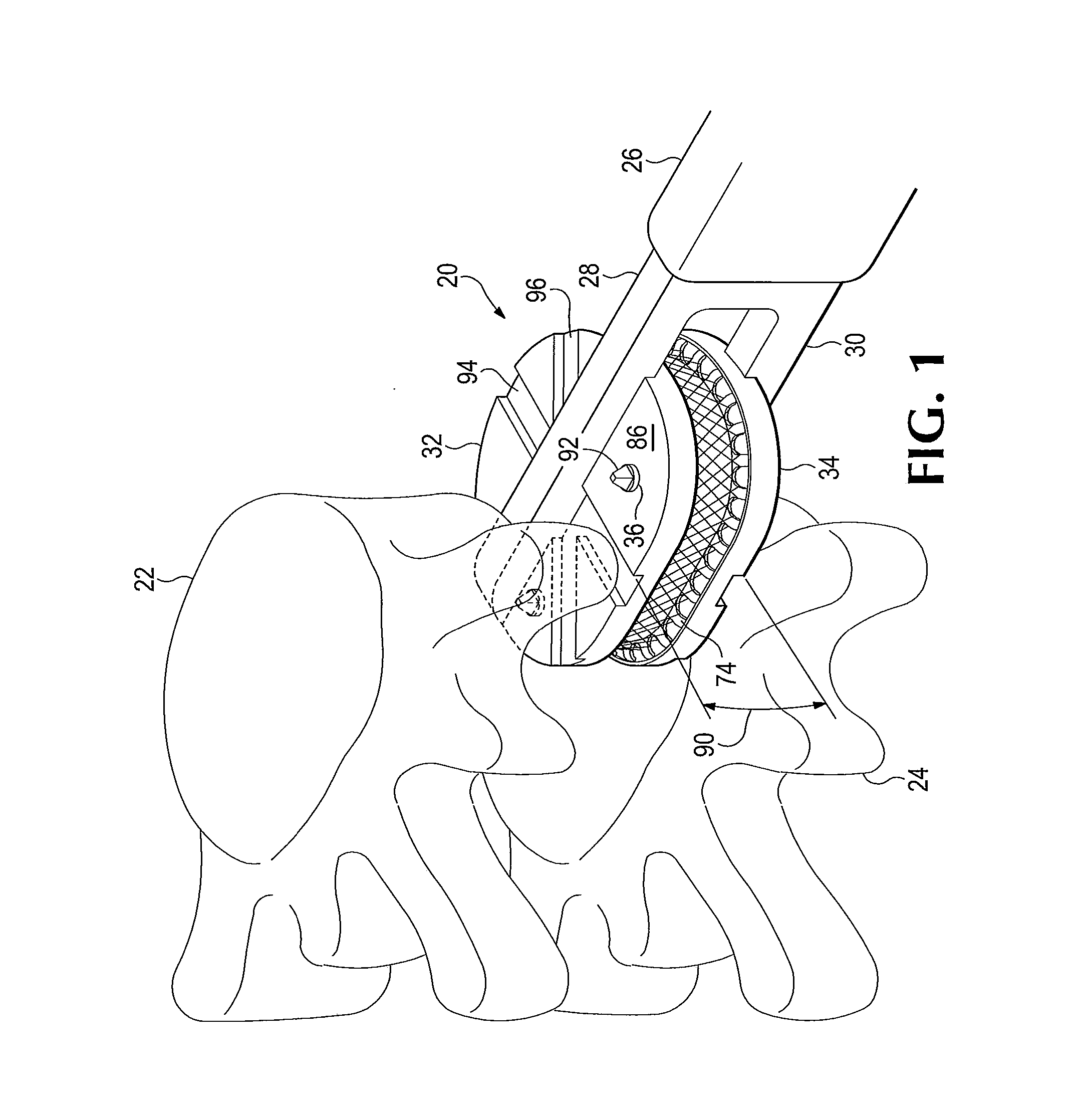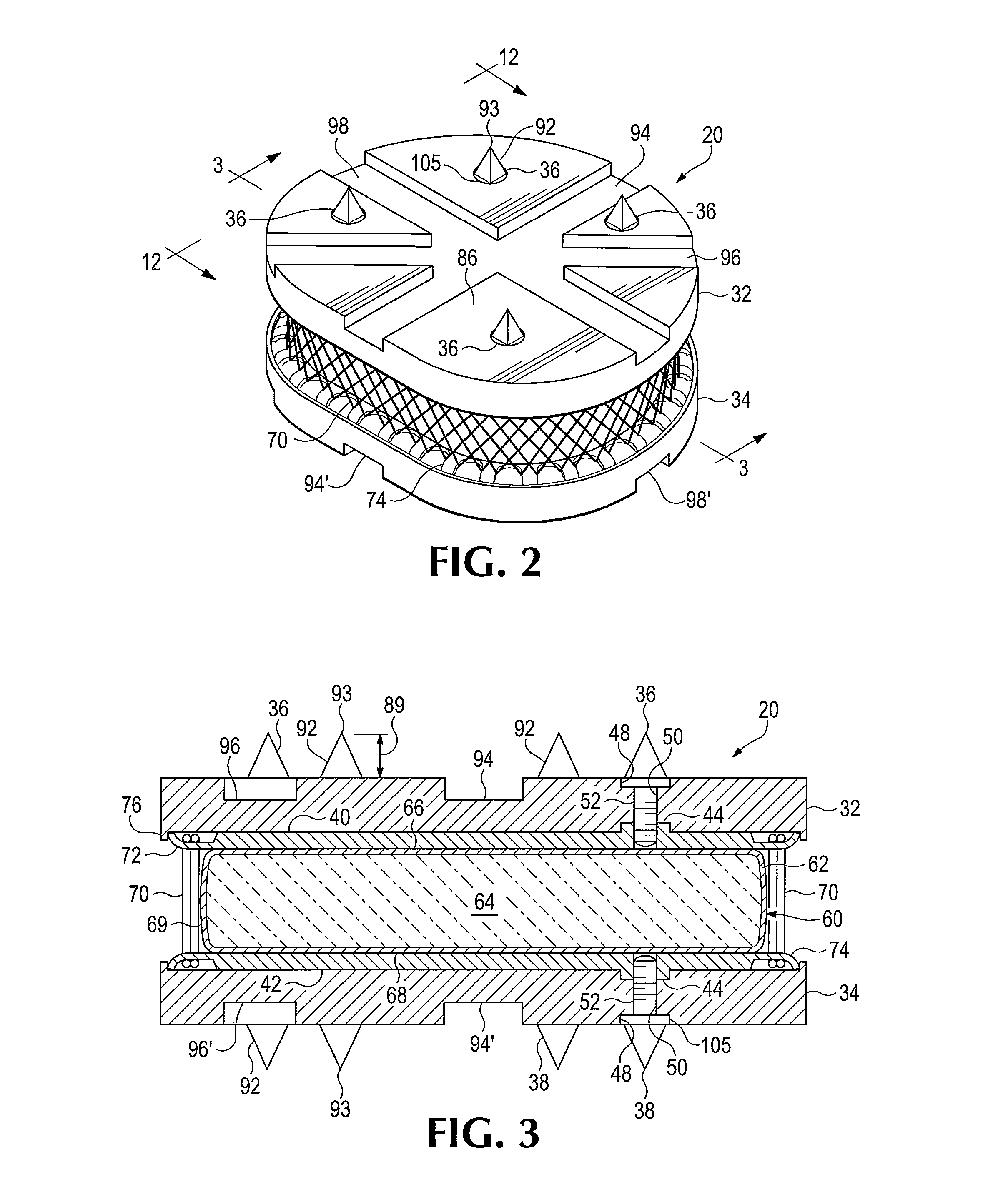Anatomic total disc replacement
a total disc and anatomic technology, applied in the field of prosthetic intervertebral discs, can solve the problems of spinal disc displacement or damage, compression or temporary deformation to a limited extent, leg pain,
- Summary
- Abstract
- Description
- Claims
- Application Information
AI Technical Summary
Benefits of technology
Problems solved by technology
Method used
Image
Examples
Embodiment Construction
[0042]As used herein, references to certain directions and orientations such as, for example, superior (towards the head), inferior (towards the feet), lateral (towards the side), medial (towards the midline), posterior (towards the back), and anterior (towards the front refer to such directions and orientations in a standing human. As they are applied to embodiments of the invention, it will be further understood that such directions and orientations refer to the position of such embodiments within a human after implantation, when the human is standing upright.
[0043]Unless specified otherwise, a physical property designated herein for a particular embodiment will be considered to be met provided its value is within 10% of the specified value of the physical property. For example, if a value for a distance in an embodiment of the invention is specified to be 10 cm, then it will be understood that embodiments of 9 to 11 cm are within the scope of the disclosure.
[0044]As shown in FIG....
PUM
 Login to View More
Login to View More Abstract
Description
Claims
Application Information
 Login to View More
Login to View More - R&D
- Intellectual Property
- Life Sciences
- Materials
- Tech Scout
- Unparalleled Data Quality
- Higher Quality Content
- 60% Fewer Hallucinations
Browse by: Latest US Patents, China's latest patents, Technical Efficacy Thesaurus, Application Domain, Technology Topic, Popular Technical Reports.
© 2025 PatSnap. All rights reserved.Legal|Privacy policy|Modern Slavery Act Transparency Statement|Sitemap|About US| Contact US: help@patsnap.com



